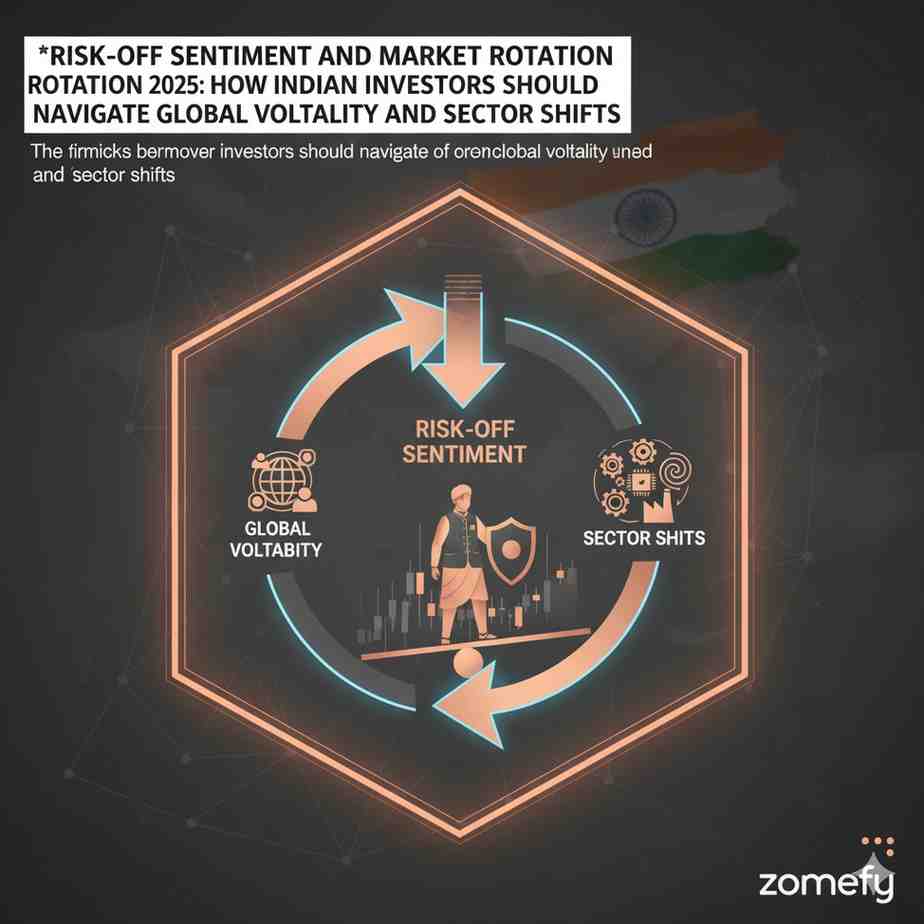Mid Cap Momentum 2025: Identifying High-Growth, Risk-Adjusted Mutual Funds for Indian Investors
In the evolving landscape of Indian equity markets, mid-cap mutual funds have emerged as a compelling investment avenue for retail investors and financial professionals alike.
Mid Cap Momentum 2025: Identifying High-Growth, Risk-Adjusted Mutual Funds for Indian Investors
What You Can Do Next
- Read the full article for complete insights
- Save for later reference
- Share with others learning about this topic
Image not available
In the evolving landscape of Indian equity markets, mid-cap mutual funds have emerged as a compelling investment avenue for retail investors and financial professionals alike. Characterized by their focus on companies ranked 101 to 250 by market capitalization, mid-cap funds blend the growth potential of emerging firms with more established business models than small caps. As of 2025, these funds have demonstrated remarkable momentum, outpacing large-cap indices and delivering robust returns amid India's economic expansion and structural reforms. This article explores the dynamics driving mid-cap momentum in 2025, highlights top-performing mutual funds in this category, and provides actionable strategies to identify high-growth, risk-adjusted investment opportunities tailored to the Indian market context. With SEBI regulations mandating at least 65% corpus allocation to mid-cap stocks, investors can harness the growth trajectory of mid-sized companies, especially in sectors like manufacturing, infrastructure, and capital goods, which have shown resilience and promise. We will also discuss risk considerations, tax implications, and portfolio construction techniques to help investors optimize returns while managing volatility effectively.
Understanding Mid Cap Mutual Funds in India
Mid-cap mutual funds are equity-oriented schemes investing primarily in medium-sized companies ranked between 101 and 250 by market capitalization, as defined by SEBI. These companies typically represent a growth phase where business models have been validated, but substantial expansion opportunities remain. Mid-cap funds allocate at least 65% of their assets to these stocks, balancing growth potential and liquidity better than small-cap funds, which tend to be more volatile and less liquid. The Indian mid-cap universe has gained significant traction due to favorable macroeconomic factors, including government initiatives like "Make in India," infrastructure spending, and digitization trends. In 2025, the Nifty Midcap 150 Index has surged over 28% year-to-date, outperforming large-cap benchmarks and reflecting strong investor confidence. Notable sectors driving this momentum include manufacturing, capital goods, and infrastructure, which benefit from rising domestic demand and global supply chain realignments. However, mid-cap funds carry higher risk than large-cap funds due to their sensitivity to economic cycles and market sentiment. Therefore, they suit investors with a higher risk appetite and a long-term horizon of at least 5 years to ride out volatility. Taxation on equity mutual funds in India is favorable for long-term investors, with a 10% capital gains tax applicable beyond one year on gains exceeding ₹1 lakh, making mid-cap funds an attractive wealth-creation vehicle.
Regulatory Framework and Market Classification
SEBI mandates that mid-cap mutual funds invest a minimum of 65% of their assets in stocks of companies ranked 101 to 250 by full market capitalization. This classification ensures that funds maintain focus on mid-sized companies, which are neither too large to offer limited growth nor too small to entail excessive risk. The regulatory guidelines also require regular portfolio disclosures and risk management practices to protect investors. The mid-cap segment in India is dynamic, influenced by domestic economic policies, corporate earnings growth, and global market trends. Investors should be aware that mid-cap fund portfolios often include a small allocation to large-cap stocks for stability and occasionally small-cap stocks to enhance return potential, though this increases risk. Understanding these nuances helps investors align their risk tolerance with fund strategies.
Performance Trends and Market Drivers in 2025
The year 2025 has witnessed robust performance in mid-cap mutual funds, with several schemes delivering annualized returns exceeding 25% over the past 3 to 5 years. For example, Motilal Oswal Midcap Fund posted a 5-year CAGR of approximately 29%, while Kotak Emerging Equity and Axis Midcap funds reported CAGRs between 23% and 29%. The Nifty Midcap 150 Index's 28% year-to-date rise underscores the sector's momentum. This growth is supported by strong earnings from mid-sized companies benefiting from increased domestic consumption, export demand, and government infrastructure projects. Additionally, sectors like technology, financial services, and consumer goods have contributed significantly to mid-cap fund returns. Retail investor participation has increased, aided by systematic investment plans (SIPs) and digital platforms, which facilitate disciplined investing in mid-cap funds. However, investors must remain vigilant about market volatility and sectoral concentration risks, especially in cyclical industries.
Top Mid Cap Mutual Funds to Watch in 2025
Identifying high-growth, risk-adjusted mid-cap funds requires analyzing performance metrics, fund management expertise, expense ratios, and portfolio composition. Among the front-runners in 2025 are Motilal Oswal Midcap Fund, Invesco India Mid Cap Fund, and Kotak Emerging Equity Fund. Motilal Oswal Midcap Fund, with an AUM of over ₹34,700 crores, has delivered an annualized 3-year return of 27.4% and a 5-year return exceeding 29%, reflecting consistent outperformance. Its portfolio includes mid-sized companies across sectors like financials, industrials, and consumer discretionary. Invesco India Mid Cap Fund, with a fund size of ₹8,500 crores, offers a 3-year return of 29.89% and maintains a relatively low expense ratio of 0.54%, enhancing net returns to investors. Kotak Emerging Equity Fund is another notable performer, delivering a CAGR between 23% and 29% over five years. These funds are managed by experienced teams with strong stock-picking capabilities and rigorous risk management frameworks. Expense ratios for mid-cap funds generally range from 0.5% to 0.7%, influencing net returns and should be considered alongside historical performance. Investors should also review fund portfolios for sectoral diversification and avoid funds overly concentrated in volatile sectors.
Performance and Expense Ratio Comparison
A comparative analysis of top mid-cap funds highlights the balance between returns and costs. Motilal Oswal Midcap Fund, with a 3-year return of 27.4% and expense ratio of 0.7%, demonstrates strong performance despite slightly higher costs. Invesco India Mid Cap Fund offers a competitive 3-year return of 29.89% with a lower expense ratio of 0.54%, potentially yielding higher net returns. Kotak Emerging Equity Fund, known for its consistent CAGR of around 25%, maintains expense ratios in the mid-range. Investors must weigh expense ratios against fund performance and portfolio quality, as a low-cost fund with mediocre returns may underperform a slightly costlier but well-managed fund. Additionally, fund size impacts liquidity and maneuverability; very large AUMs may limit agility in mid-cap stocks, while very small funds may face liquidity challenges. For instance, Motilal Oswal’s sizable AUM of ₹34,700 crores offers stability but requires careful portfolio management to maintain growth.
Portfolio Composition and Sectoral Exposure
Top-performing mid-cap funds maintain diversified portfolios across high-growth sectors. Common sectoral exposures include financial services (non-banking finance companies, private banks), industrials (capital goods, infrastructure), consumer discretionary (retail, automobiles), and information technology. For example, Motilal Oswal Midcap Fund’s portfolio features companies like AIA Engineering, Dixon Technologies, and Balkrishna Industries, which have shown robust earnings growth and market leadership in niche segments. Invesco India Mid Cap Fund focuses on companies with sustainable competitive advantages and strong management teams. Sectoral diversification reduces concentration risk but investors should monitor the fund’s allocation to cyclical sectors, which can amplify volatility during economic downturns. Additionally, funds often hold a small portion in large-cap stocks to cushion against mid-cap volatility. Reviewing quarterly portfolio disclosures helps investors stay informed about sectoral shifts and emerging opportunities.
Risk Management and Tax Considerations for Mid Cap Investors
While mid-cap mutual funds offer attractive growth potential, they come with heightened volatility and risk compared to large-cap funds. Market corrections, economic slowdowns, and sectoral downturns can disproportionately impact mid-cap stocks. Investors should adopt risk management strategies such as diversification across funds and sectors, regular portfolio reviews, and adherence to a long-term investment horizon of at least 5 years. Systematic Investment Plans (SIPs) are effective in mitigating timing risks by averaging purchase costs over market cycles. Additionally, investors should be aware of liquidity risks, as mid-cap stocks may have lower trading volumes than large caps, potentially affecting exit timing. From a taxation perspective, equity mutual funds are subject to capital gains tax of 15% on short-term gains (holding period less than one year) and 10% long-term capital gains tax on gains exceeding ₹1 lakh beyond one year. Dividend distribution tax has been abolished, but dividends are taxable in the hands of investors. Understanding these tax implications can optimize post-tax returns and guide investment horizon decisions.
Volatility and Portfolio Diversification
Mid-cap funds inherently exhibit higher price volatility due to their sensitivity to market sentiment, earnings variability, and economic cycles. To manage this, investors should diversify their equity exposure by combining mid-cap funds with large-cap and multi-cap funds, which provide stability and reduce overall portfolio risk. Diversification across sectors and themes within mid-cap funds further mitigates idiosyncratic risks associated with individual companies or industries. Regular portfolio rebalancing ensures alignment with risk tolerance and investment goals. Furthermore, investors should maintain sufficient liquidity outside equity investments to avoid forced selling during market downturns, which can crystallize losses.
Tax Efficiency and Holding Period Strategies
Taxation significantly affects net returns from mid-cap funds. Short-term capital gains (STCG) on equity funds held less than one year are taxed at 15%, which can erode gains in volatile markets. Long-term capital gains (LTCG) exceeding ₹1 lakh are taxed at 10% without indexation benefits, making holding periods beyond one year optimal for tax efficiency. Investors should plan withdrawals and redemptions considering these tax slabs. Additionally, investing through SIPs can create staggered purchase dates, optimizing average tax liability. For NRIs, tax treaties and regulations may differ; hence, consulting tax advisors is prudent. Staying informed about regulatory changes by SEBI and the Income Tax Department ensures compliance and maximizes post-tax wealth accumulation.
Actionable Investment Strategies for 2025 and Beyond
To capitalize on mid-cap momentum in 2025, investors should adopt a disciplined and research-driven approach. Key strategies include:
Implementing these strategies enables investors to harness the growth potential of Indian mid-cap companies while managing risk effectively. Professional advice and continuous education are essential for adapting to market dynamics and achieving superior risk-adjusted returns.
Selecting Funds Based on Quantitative and Qualitative Metrics
Investors should evaluate mid-cap funds using a combination of quantitative metrics—such as 3-year and 5-year CAGR, standard deviation (volatility), Sharpe ratio (risk-adjusted returns), and expense ratio—and qualitative factors like fund management expertise, investment philosophy, and portfolio construction. Funds with a strong track record of outperforming benchmarks during different market cycles and maintaining reasonable expense ratios (typically below 0.7%) are preferable. Additionally, understanding the fund manager’s approach to stock selection, risk management, and sector allocation provides insights into future performance stability. Tools like mutual fund rating agencies and performance trackers can aid in screening suitable funds.
Utilizing Systematic Investment Plans (SIPs) for Volatility Mitigation
SIPs allow investors to invest fixed amounts regularly, averaging out the purchase cost over market fluctuations, which is particularly beneficial in volatile mid-cap segments. This disciplined investment method reduces the impact of market timing, lowers the risk of investing a lump sum at market peaks, and encourages long-term wealth creation. For 2025, SIPs in top mid-cap funds like Motilal Oswal Midcap and Invesco India Mid Cap can be started with minimum amounts as low as ₹500, making them accessible to retail investors. Monitoring SIP performance periodically and increasing contributions during market corrections can enhance returns. SIPs also align well with tax planning by spreading investments across financial years.
Continue Your Investment Journey
Discover more insights that match your interests

Deglobalization and the New Multipolar World: Investment Strategies for Indian Markets in 2025
The global economic landscape in 2025 is witnessing a marked shift from decades of hyper-globalization to a phase often described as deglobalization, accompanied by the rise of a new multipolar wor...

Risk-Off Sentiment and Market Rotation in 2025: How Indian Investors Should Navigate Global Volatility and Sector Shifts
The Indian equity markets have entered a critical phase in 2025, characterized by persistent foreign portfolio investor (FPI) outflows, elevated valuations, and heightened global uncertainty.

Portfolio Construction Guide: Core-Satellite Strategy
Step-by-step guide to building a diversified portfolio using core-satellite strategy with mutual funds and direct equity.

India's Auto Sector Recovery in 2025: GST Cuts, RBI Support, and Investment Opportunities for Retail Investors
India's automobile sector is experiencing a significant recovery in 2025, marked by transformative policy interventions and macroeconomic stimulus measures.
Explore More Insights
Continue your financial education journey
